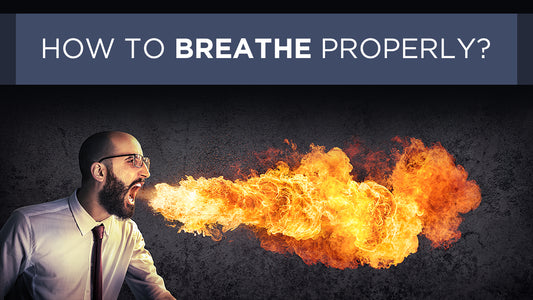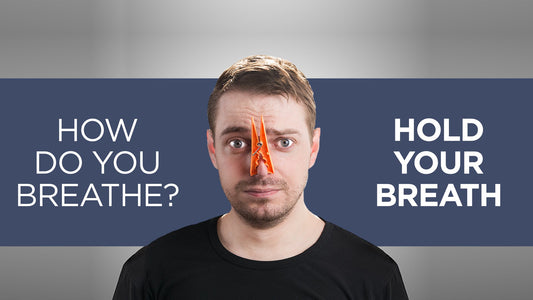
John B West: Lectures of Respiratory Physiology – description
Description of the Course
By John B. West
A complete course of respiratory physiology suitable for first-year medical and graduate students has been placed on the Web for our own students and for other educational institutions. There are several reasons for doing this. The first is that the modern-day student uses a variety of options for acquiring knowledge. These include attending lectures, reading texts, iPod downloads, and surfing the internet. This Web-based course is another option that may be preferable for some students.
A second reason is that it is becoming increasingly difficult for some medical schools to find faculty members who are willing and able to teach the principles of respiratory physiology. This is a potentially serious problem because a sound knowledge of respiratory physiology will always be necessary for the intelligent practice of medicine. Schools with limited faculty may find it useful to use these Web-based lectures followed by a discussion session with students. Another reason is that some schools have moved away from systematic lectures to case-based discussions, with the possibility that students will not be exposed to some of the principles of respiratory physiology. The hope is that this comprehensive course of lectures will help students to assimilate this important material as the medical school curriculum continues to expand at a rapid rate.
A sound knowledge of respiratory physiology will always be necessary for the intelligent practice of medicine. This is true not only for general physicians and those specializing in pulmonary medicine but also for critical care physicians, anesthesiologists, cardiologists, and other medical personnel, such as intensive care nurses and respiratory therapists. But, in addition to the subject’s importance in medical education, respiratory physiology is an important discipline in its own right. Gas exchange is a cardinal function of all members of the animal kingdom, and while the emphasis here is on mammalian physiology, many of the principles are applicable to other vertebrates and invertebrates.
There is general agreement on what a first-year medical student needs to know about normal respiratory physiology. For example, a detailed list of topics has been set out by the American Physiological Society in conjunction with the Association of Chairs of Departments of Physiology. This can be found in the document titled “Pulmonary Medical Physiology Objectives” (1). These objectives are also echoed, although very briefly, in a statement on requirements put out by the National Board of Medical Examiners (2). Furthermore, there are several texts that cover the same material, including my own Respiratory Physiology: the Essentials (4) and other similar texts.
Respiratory physiology has always been a challenging area for many medical students. This is partly because it is so quantitative and necessarily makes use of a number of equations. Students with an elementary mathematical background often find these daunting. In addition, respiratory physiology makes use of a number of concepts that have been traditionally taught in a high school or college physics course, and the present-day student finds these more challenging than was the case 20 years ago. Apparently, the time now spent on teaching physics has been decreased, presumably because of the increased emphasis on biology. In fact, we now find it valuable to give our first-year medical students a primer outlining some of the basic physical principles of pressures, flows, resistances, elasticity, and the like (3). Another unfortunate development is that some medical schools are having increasing difficulty finding faculty members who are willing and able to teach classical respiratory physiology. The probable reason is the great burgeoning of molecular biology in medicine with the result that many faculty members are working in this area but are not comfortable teaching basic respiratory physiology. This change is in spite of the fact that a good knowledge of the principles of gas exchange and mechanics of breathing are essential for someone working in the area of intensive care or anesthesia. In fact, this project was initially stimulated by an e-mail I received from a medical school faculty member in Norway who complained that they had difficulty in finding the appropriate people to teach respiratory physiology to first-year medical students. He suggested that I consider putting something on the Web.
Description
The full course consists of 14 lectures, which are shown in Table 1. In fact, only 12 topics are covered, but both pulmonary gas exchange and mechanics of breathing contain so much material that it is best to allocate 2 lectures to each of these. The lectures are ∼40–50 min in length. The material is based on the course that we have taught to medical and graduate students at the University of California-San Diego for ∼40 yr. Much of the content is an expansion of that in my little book Respiratory Physiology: the Essentials. However, the lecture format allows more time to be spent discussing some of the more difficult concepts. In addition, the Web-based format allows the use of a large number of images that are is not feasible to include in a textbook. The course includes ∼300 images, and a list of credits for these is included in the website.
The format of the lectures consists of a close-up view of the lecturer alternating with a full-screen view of the PowerPoint images that he is describing. This format is much better than attempting to record a lecture in a large hall, where the images are dimly displayed on the lecture screen and the speaker is some distance from the camera.
Each lecture can stand on its own, and the order can be changed if necessary. However, starting with lecture 1 on structure and function of the lung is recommended because this is a good introduction to what follows. The topic of ventilation naturally follows from this, and it allows an explanation of some of the symbols that are used in respiratory physiology.
Some instructors elect to teach the mechanics of breathing along with ventilation. Indeed, this makes sense because the mechanics of breathing is intimately associated with how the lung and chest wall move. However, my own feeling is that the topic of mechanics is so complex and difficult for the present-day medical student that it is best dealt with separately and later in the course, when the students are perhaps more prepared for the concepts. As stated earlier, the modern medical student apparently finds concepts of pressure, flow, resistance, and similar physical principles more difficult than was the case 20 years ago.
In my little book, the topic of ventilation is followed by those of diffusion, blood flow, pulmonary gas exchange, and then blood gas transport. This is a natural sequence in the sense that it follows the oxygen cascade from the air to the peripheral tissues. However, in a series of lectures, this sequence is not ideal because to understand the topics of diffusion and pulmonary gas exchange, the student needs to be familiar with the concepts of partial pressures in gases and liquids and the resulting concentrations of the gases, and these concepts are best introduced in the context of blood gas transport. Therefore, in this series, blood gas transport immediately follows the topic of ventilation. Furthermore, since blood gas transport includes the carriage of both carbon dioxide and oxygen, and carbon dioxide handling is so intimately associated with acid-base status, it makes sense to deal with acid-base immediately after blood gas transport. However, as stated before, in general, the lectures can stand alone and can be taught in any order.
A word should be added about the lecture on defense systems of the lung. This is not always included in a typical course of respiratory physiology for first-year medical students. Sometimes it is relegated to the second year, where pathophysiology is taught. However, the topic of defense systems is certainly a legitimate one in a discussion of normal respiratory physiology. Also, most students find subjects such as the mucociliary escalator interesting, and of course the deposition and clearance of pollutants from the lung is of enormous importance in clinical medicine. The topic has therefore been given a full lecture, although it is more cursorily covered in my textbook.
The lung under stress is another topic where there can be differences of opinion. Certainly the physiology of exercise deserves a place in a course on normal respiratory physiology. An introduction to the physiology of high altitude is valuable because this is one of the best examples of the importance of hyperventilation caused by hypoxia. Also, the process of acclimatization to high altitude has always been a good introduction to how the body adapts to a hostile environment. The physiology of diving is also an interesting topic with several fascinating aspects, although perhaps I am influenced by the fact that San Diego is a popular diving area and accidents are common. Spaceflight is admittedly an exotic subject that few students will encounter later in life. However, it is one of the more colorful and fast-growing areas, and we always have one or two students who have considered becoming astronauts. The final lecture on respiration at the limit describes the physiology of humans exposed to the most severe hypoxia that they can tolerate, that is, on the summit of Mount Everest.
DISCLOSURES
No conflicts of interest, financial or otherwise, are declared by the author(s).
ACKNOWLEDGMENTS
The author thanks Gil Jansky for professional production of the videos, Zhenxing Fu and Amy Clay for help with preparing the PowerPoints, my colleagues Peter D. Wagner and Frank L. Powell for some of the material, my assistant Keith Lander for transcriptions, and Jess Mandel of the Dean’s office for financial assistance. Finally, many of our excellent medical students have contributed through discussions of the material over the years.
REFERENCES
- American Physiological Society. Pulmonary Medical Physiology Objectives (online). http://www.the-aps.org/education/MedPhysObj/pulm.htm [15 June 2011]
- National Board of Medical Examiners. 2011. Step 1. Content Description and General Information (online). http://www.usmle.org/Examinations/step1/2011Step1.pdf [15 June 2011]
- West JB. Challenges in teaching the mechanics of breathing to medical and graduate students. Adv Physiol Educ 32: 177–184, 2008
- West JB. Respiratory Physiology: the Essentials. Philadelphia, PA: Lippincott, Williams & Wilkins, 2008






